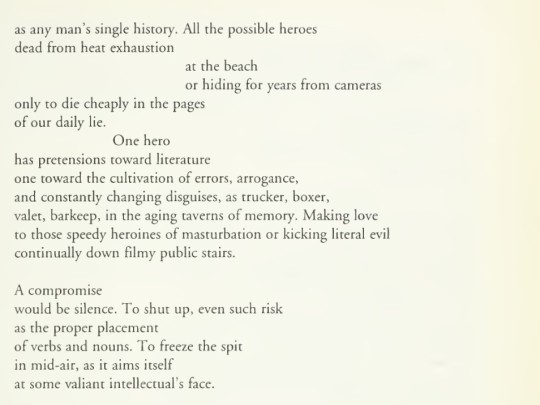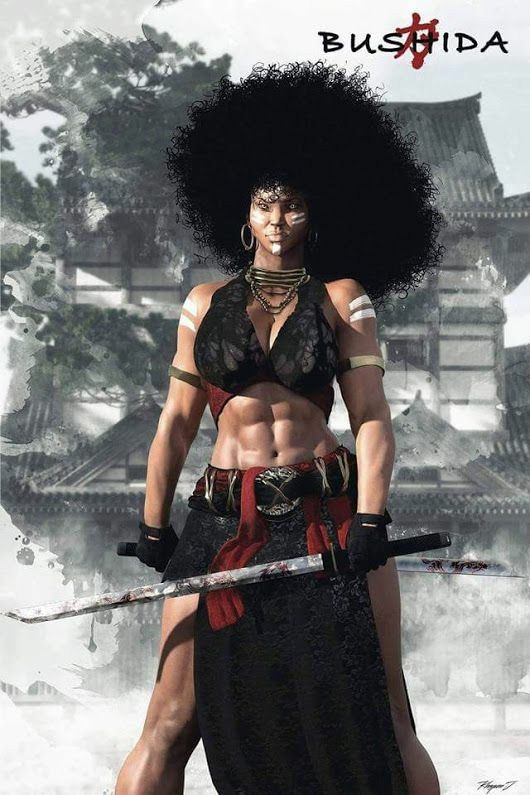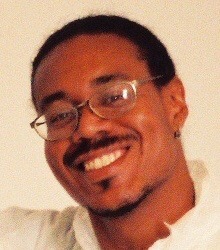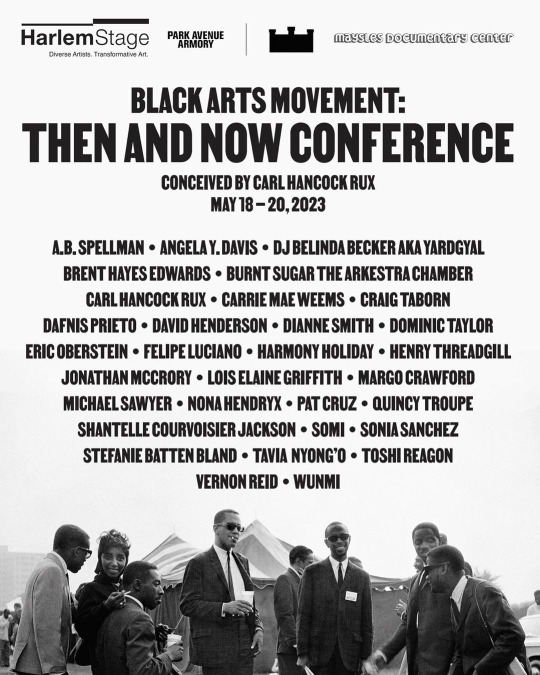#Black Arts Movement
Text

Dindga McCannon (African-American b. 1947), Woman #1, 1975–1977. Acrylic on canvas, 106.68 × 83.82 cm | 42 × 33 in. (Source: National Gallery of Art, Washington)
#art#artwork#modern art#contemporary art#modern artwork#contemporary artwork#20th century modern art#20th century contemporary art#American art#modern American art#black arts movement#Where We At#American artist#American painter#Dindga McCannon
2 notes
·
View notes
Text
Literally just finished Oreo (Fran Ross) in like 7 hours, I’ve never read a book so fast in my life. I’m obsessed with it.
3 notes
·
View notes
Text




Amiri Baraka, "Short Speech to My Friends"
4 notes
·
View notes
Text

BUSHIDA
Art by RHAYVEN JONES
43 notes
·
View notes
Text

Michael Rolando Richards (August 2, 1963 – September 11, 2001) was an African-American sculptor of Jamaican and Costa Rican ancestry who was killed during the September 11 attacks while in his art studio on the 92nd Floor of the World Trade Center's North Tower. He explored his African-American history and identity through sculpture, conceptual art, and installation pieces. Influenced by the Black Arts Movement of the 1970s, Richards delved into African-American history and folklore for images that would expose the contradictions of American society. Richards worked primarily in bronze.


Richards's 1999 sculpture Tar Baby vs. St. Sebastian featured a Tuskegee Airman portrayed as St. Sebastian and was a part of his "Tuskegee Airmen Collection" that he spent over ten years creating. St. Sebastian was an early Christian martyr and the patron saint of soldiers and athletes because of his physical endurance. St. Sebastian was executed by being shot full of arrows for protecting captured Christians he was supposed to imprison. However, in this sculpture, it was a Tuskegee Airman who was being pierced by multiple airplanes. Tar Baby vs. St. Sebastian measures seven feet tall and is made out of resin and steel. Richards actually cast his own body in plastic resin to create this sculpture and others.
#Michael Rolando Richards#michael richards#black art#black arts movement#Tuskegee Airmen#Prescient#September 11#9/11
4 notes
·
View notes
Photo

Lubaina Himid
Dandy (2010)
5 notes
·
View notes
Photo

Consider Saar’s The Liberation of Aunt Jemima.
4 notes
·
View notes
Text
A little context for the Black Arts Movement, its connection to the Black Power movement, and Baraka's work within both movements.
4 notes
·
View notes
Text
4 notes
·
View notes
Text

Just postin one of my random sketches 😁
#my art#black art#creative#art#drawing#sketchbook#sketches#atlanta#new york#los angeles#north carolina#chicago#black arts movement#black artist
3 notes
·
View notes
Photo

(via Larry Neal Is the Forgotten Founding Father of the Black Arts Movement | Frieze)
1 note
·
View note
Text
LeRoi Jones: Black Arts Movement
https://www.jstor.org/stable/3205500?seq=3
DAPHNE S. REED
LeRoi Jones: High Priest of the Black Arts Movement. (1970)
Honestly, I'd heard about Black Art as a singular thing, but never the Black Arts Movement. (My education in the US mainly set out to hold black people as a token but look, we did diversity this year, rather than study movements within POC communities in art) On the back of my own ignorance, I'm posting this JSTOR article because it's likely if I never heard of it, that a lot of the people out there never heard of it. And buried in these mentioned plays might be transformative works that might help someone who is equally ignorant to study or find a story structure we've forgotten?
Just a thought.
It's a JSTOR link, so it's free to sign up, but you still have to sign up.
I like the framing of it as a struggle for civil rights, because that asks so many questions when we often in school got the plays in my school that either showed Black struggle, but wasn't that challenging to white people, or we got white person tells about Black struggle (!@#$, do we have to read To Kill a Mockingbird again 'cause my classmates don't want to read or write?). But these plays according to the author were made and framed specifically to challenge white notions of slavery, etc, and argue for specific things. I find that part fascinating. What makes things resonate, acceptable, not acceptable, there is so much one could do with this in a teaching environment. I'm interested in the question of resonance of an art piece over time too.
I'm sifting through journals now. TT Antigone. I think I've lost her.
#black history#story theory#story structure#diversity writing#diversity#writing#writing diversity#Black Arts Movement
0 notes
Text
The Black Arts Movement was a movement that began in the mid-1960s, that solidified the arts-activism of Amiri Baraka. Amiri Baraka was a Black American writer who wrote in the genres of poetry, drama, fiction, and music criticism. Baraka, a New jersey native, used his ideas, and platform to publish provocative works that underlined the oppression and suppressed anger of Black people in America. His work was often considered highly inappropriate and he was thought of as a radical person politically. He even was discharged from the U.S. Air force because he was suspected to have communist affiliations. Though his works were raunchy and were not necessarily acceptable for institutional purposes, they gave some of the most accurate explanations of the feelings Black people had towards the injustices they were facing during that time. When Malcom X was assassinated in 1965, Baraka and those who embraced the Black Power Movement called for poetry, novels, visual arts, and theatre works to be created to reflect black pride in black history and culture. This call for Black art that was an affirmation of autonomy of Black artists to create African American art for Black people gave means to awake Black consciousness and achieve liberation. The Black Arts Movement began here, in 1965, when Baraka opened the Black Arts Repertory Theater in Harlem, New York. The movement spread from New York to Chicago, Detroit, and San Francisco and its biggest impact was in the areas of theater and poetry. In Chicago, Illinois, two men named Hoyt Fuller and John Johnson made the Negro Digest which prompted the works of new Black literary artists. In Michigan and California, publishing companies began publishing Black Literature as scholarly journal to make way for more Black studies in the world of academia. While this movement seems rather peaceful, its raw shock value usually embraced violence within both the black and white mainstream culture. Many of the works within this movement were considered sexist, racist, homophobic, and anti-sematic. As for Black women during this movement, they used and sacrificed their voices to produce pieces about Black hyper masculinity in response to the humiliation and degradation of Black men.
I know Baraka’s movement was inappropriate for the purposes of academia, but I believe that is what prompted society to use their voice for the good of everyone. The Arts movement showed Black people that they could, in fact, change the world with just establishing the injustices they faced and displaying that in creative, artistic ways. This was shown towards the end of the movement when Baraka and other figures achieved cultural recognition and economic success as their works were beginning to be celebrated by White mainstream society. These were achievements unthought of before the movement began. This movement was necessary to happen after the assassination of Malcom X because he prominent place in society left the Black community fearful of what could happen to them if they were as outspoken as Malcom X. The Black Arts Movement left so many timeless pieces of literature, poetry, and theater and headed what we now know today as African American Literature.
-Chloe Flowers
1 note
·
View note
Text

"DISTANT SUMMER"
Art by KADIR NELSON
31 notes
·
View notes
Text

Sonku, Sonia Sanchez.
1 note
·
View note
Text
🎶🎨🎙🎥 #ArtIsAWeapon

Reposted from @parkavearmory Our #MakingSpaceArmory series continues Saturday, May 20 with Hapo Na Zamani (Black Arts Movement Past and Present) hosted by @carlhancockrux and co-presented by @harlemstage as the culminating event in their #BlackArtsMovement: Then and Now Conference.
This unexpected and surprising evening reimagines a 1960s-style happening for today, complete with elements of painting, spoken word, music, movement, wonder, and more.
With musical direction by Vernon Reid (@vurnt22), the evening centers around a set of concerts by Reid and Burnt Sugar The Arkestra Chamber (@burntsugararkestra) inspired by the greats of the Black Arts Movement and honoring the musical legacy of the late writer and intellectual Greg Tate. Before and after seated performance times, audiences are invited to engage with screenings of Stefanie Batten Bland’s (@sbb_land) film “Kolonial,” as well as other activations and installations featuring Shantelle Courvoisier Jackson (@stvoisier), Nona Hendryx (@nonahendryx), Somi (@somimusic), Wunmi (@wunmi_olaiyaofficial), Carrie Mae Weems (@carriemaeweems), Dianne Smith (@iamdiannesmithart), and other surprise guests.
Link for more info + tickets!
(📷: “Kolonial” by Stefanie Batten Bland (2021). Photo by Maria Baranova.)
▪︎

@harlemstage This weekend Harlem Stage is incredibly proud to present a very special series of programs.
BLACK ARTS MOVEMENT: THEN AND NOW CONFERENCE May 18-20 2023
Inspired, imagined, and curated by Harlem Stage Associate Artistic Director/Artist-in-Residence, @carlhancockrux, the Black Arts Movement: Then and Now Conference is a three-day event featuring a keynote address by poet, music critic, and arts administrator A.B. Spellman. The conference includes panels, discussions, essays, and performances, featuring pioneers and visionary artists including Angela Y. Davis, Nona Hendryx, Sonia Sanchez, Henry Threadgill, Toshi Reagon, and more, as well as a closing-night concert co-presented with Park Avenue Armory, curated by Carl Hancock Rux, Tavia Nyong’o, and Vernon Reid, with contributions by Carrie Mae Weems, Stefanie Batten Bland, and Dianne Smith.
Employing roundtables, public dialogues, and screenings, the convening will explore controversial areas of tension between the intellectual, ethical, and commercial imperatives of the Black Arts Movement. In conversations between pioneers of the Black Arts Movement and a contemporary generation of artists and scholars, the Black Arts Movement Conference centers itself within a dialogue that is both historically and culturally relevant in our ever-changing world.
If you have yet to visit us at the Gatehouse at 135 Convent Avenue, this weekend your moment.
Tickets and complete conference schedule at Harlemstage.org
See you soon ✊🏾
#blackartsmovement #music #art #film #politics #progress #forward #past #harlem #newyork #globalshift #thingstodoinnyc #culture #legends #pioneers
1 note
·
View note